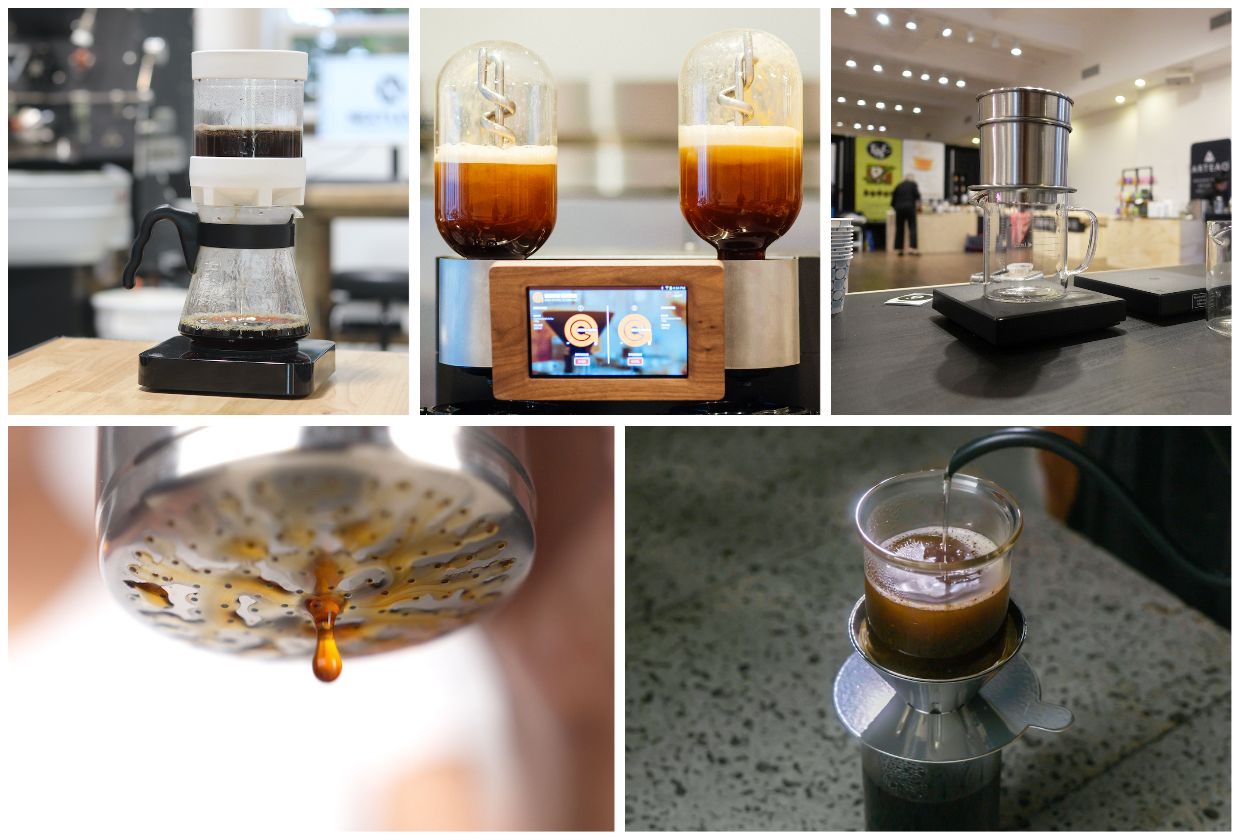
Borrowing principles old and new, a variety of new home and commercial coffee brewers have entered the market in recent years, promising zero bypass brews or controlled bypass brews.
A growing number of manual coffee brewing devices categorized as “no bypass” or “zero bypass” brewers have recently entered the market, while a technique called “bypass brewing” has also gained traction in coffee circles.
These new bypass-related trends beg the questions, “What exactly is bypass?” and “Why is it sometimes avoided and sometimes embraced?”
The Good, The Bad and The Bypass
In the context of coffee brewing, the term “bypass” refers to water that finds its way into the final brew without having passed through a bed of ground coffee. It is generally considered good when done on purpose, but bad when it happens by accident.
In any percolation brew, such as automatic drip or manual pourover, all of the factors that a home or pro barista strives to control contribute to the optimal flow of water through the coffee. These include grind size, the ratio of coffee to water, pouring speed and technique, filter material and shape, and so on.
If certain variables in a percolation brew are out of whack, water can circumvent, or bypass, the grounds unintentionally. In practical terms, water may find its path of least resistance through channels forged outside the coffee filter, along brew chamber walls, or through tunnels in the bed of coffee.
That’s the bad kind of bypass. Water that does not interact with coffee, or interacts only superficially before escaping, does not contribute to a full, even and predictable extraction.
“I think of controlling bypass as an insurance measure — not a guarantee — for optimizing percolation efficiency, and it’s important to note that it is only one of a multitude of factors that correlate to cup quality in a brewing device,” Ray Murakawa, designer of the Melodrip brewing tool and of the upcoming no-bypass Colum dripper, recently told Daily Coffee News. “The recipe or technique, filter paper type, and fluid retention characteristics are all equally important to the measurable result of any brewer.”
At this point, one might reasonably ask: How is this new? Since the dawn of coffee brewing, have we not been trying to get all the water to flow through all the grounds?
A Brief History Of Today’s Bypass
Whether or not they were explicitly designed to avoid bypass, traditional brewers such Vietnamese phin brewers or South Indian filter brewers have for generations been drawing water down through coffee by gravity, with no path for the water but through the coffee.
The goal of efficient percolation through manual pourovers or auto drip brewers is also nothing new.
What has changed is the refinement and adoption of new tools and methodologies affecting every variable of percolation coffee brewing, including coffee freshness, grinder performance, temperature-controlled kettles, digital scales, optimized filters and much more.
All these things have opened doors to new levels of precision, allowing closer study and greater potential control over previously hard-to-control factors such as unintentional bypass.
“Around 2016, when refractometers came into vogue, home brewers and [coffee] competitors were looking closer at scientific tools for maximizing extraction,” said Murakawa, who cited a piece of laboratory equipment known as the Büchner Funnel as a precursor to today’s no bypass brewers.
More recently, a December 2020 entry posted to the Coffee ad Astra blog called “Brewing with the Fellow Stagg [X] Dripper” caught the coffee world’s attention through its thorough address of bypass.
Written by Jonathan Gagné, astrophysicist and author of the book The Physics of Filter Coffee, the post cites ideas put forth by fellow coffee thinkers — including Murakawa and author and consultant Scott Rao and others, while documenting Gagné’s own techniques and experiments.
“When [bypass] happens, less water will reach the bottom of the coffee bed, and the bottom will remain less extracted than the surface layers of the coffee bed,” Gagné wrote. “This is where dripper geometry becomes important: a conical dripper will allow water to escape from the middle of the coffee bed, whereas a cylindrical dripper won’t allow this as easily.”
Zero bypass brewers that have emerged in the time surrounding Gagné’s 2020 post employ cylindrical geometry. They also tend to include impermeable sides and a filtered bottom exit path strictly beneath the coffee, making it impossible for water to bypass the coffee.
Such brewers have been entering the market at a swift clip.
The cylindrical no-bypass Tricolate brewer emerged from Australia in 2018, around the same time that Murakawa’s handheld Melodrip brewing tool first hit the market. The Tricolate was followed by the NextLevel brewer, which hit the United States market in March 2021. Earlier this year an all-metal brewer called Drobi One by South Korean company Rainmaker launched retail sales. India and UK-based Aramse recently rolled out a modernized South Indian filter coffee called the Sofi 72. Italian grinder-maker Ceado rolled out a lateral-infusion no-bypass brewer called The Hoop earlier this year. The Melodrip Colum, in which a cylindrical column of water is drawn down through a conical filter at the bottom, is planning to launch for sale this August.
These brewers and others are designed to remove unintentional bypass from the complex brewing equation, thereby demanding users’ intentional control over the other myriad factors affecting the finished brew, such as the grind, brew ratio and more.
Bypass Brewing For Time and Flavor
The industry’s interest in zero bypass brewing has also led to renewed interest in intentional “bypass brewing.” This is the practice of adding fresh water to the brew on purpose, diluting it to the desired composition.
The classic espresso-based Americano — in which a concentrated shot of espresso is diluted with water — is a prime example of bypass brewing, although it has not been historically referred to as such, nor practiced with much of an eye towards precison.
In the modern world of filtered coffee percolation, bypass brewing typically involves a tightened brew ratio — more coffee and/or less water — for a concentrated initial brew.
Popular theory holds that the more desirable elements of flavor, aroma and acidity are extracted from coffee early in the extraction process; therefore, ending a brew more quickly and using less water might lead to a more enjoyable cup.
In recent years, bypass brewing has been presented as a potential time saver in commercial coffee settings, particularly for large finished batches to meet high demand.
In 2016, the Ground Control brewer made a splash in the commercial coffee world while embracing this theory and combining water and coffee for shorter durations. In commercial equipment this year, the Swiss-made Tone Touch 04 batch brewer launched with a built-in bypass system.
Also this year, Japanese home appliance maker Balmuda introduced North American markets to a consumer coffee maker called The Brew that performs an automatic bypass brew.
While the bypass brewer market is growing, it will require continued technical innovation in commercial applications. Meanwhile, in home-oriented manual applications, the focus on bypass is not likely to pass by anytime soon.
“Just as the AeroPress paved the way for no-bypass brewing almost 20 years ago, the current wave of Büchner-style brewers will continue to improve as a consumer product in usability and feature set in its own subcategory,” said Murakawa. “But for most enthusiasts, they will always sit alongside their familiar conicals and flats of yesteryear.”
Does your coffee business have news to share? Let DCN’s editors know here.
Howard Bryman
Howard Bryman is the associate editor of Daily Coffee News by Roast Magazine. He is based in Portland, Oregon.
Comment
1 Comment
Comments are closed.



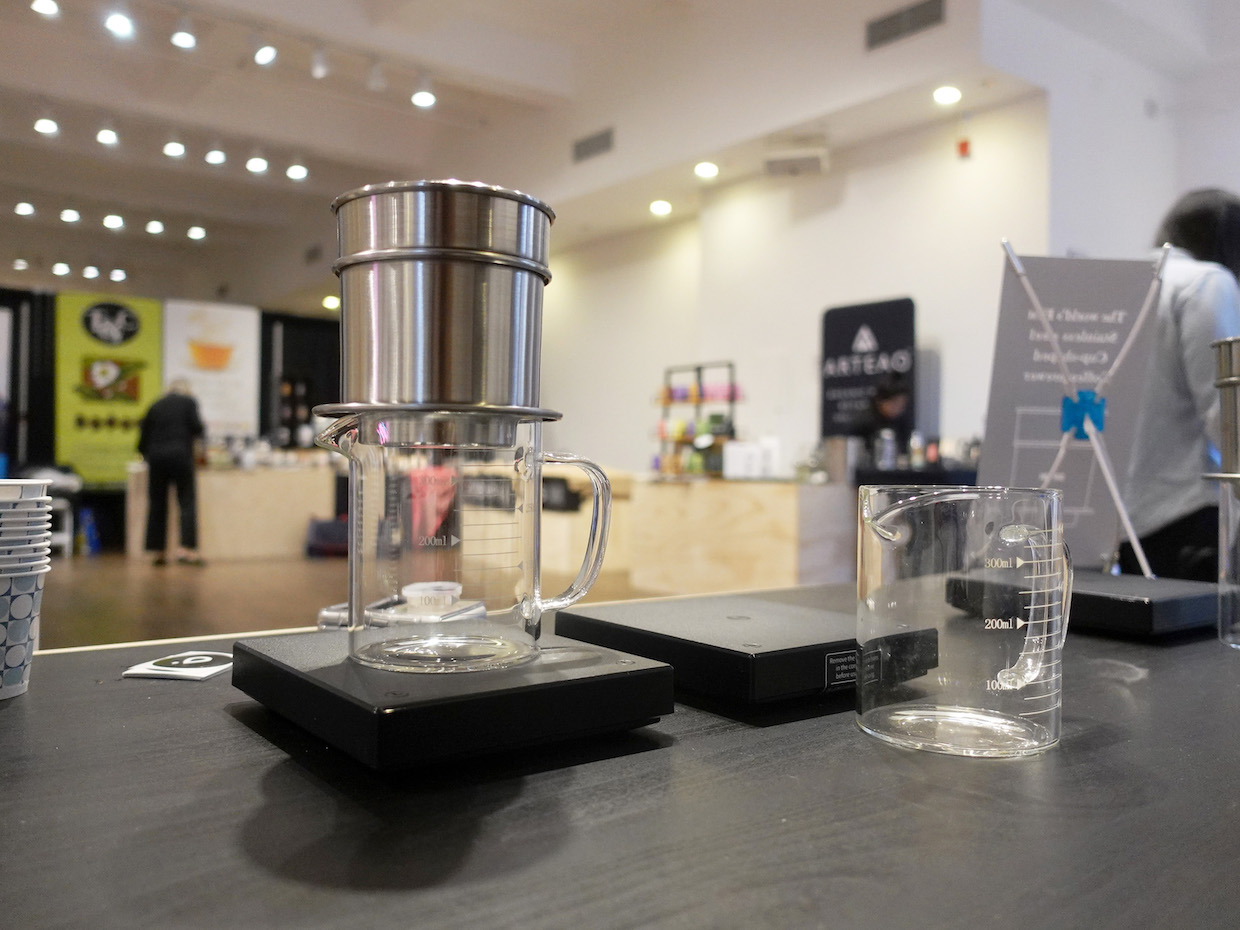
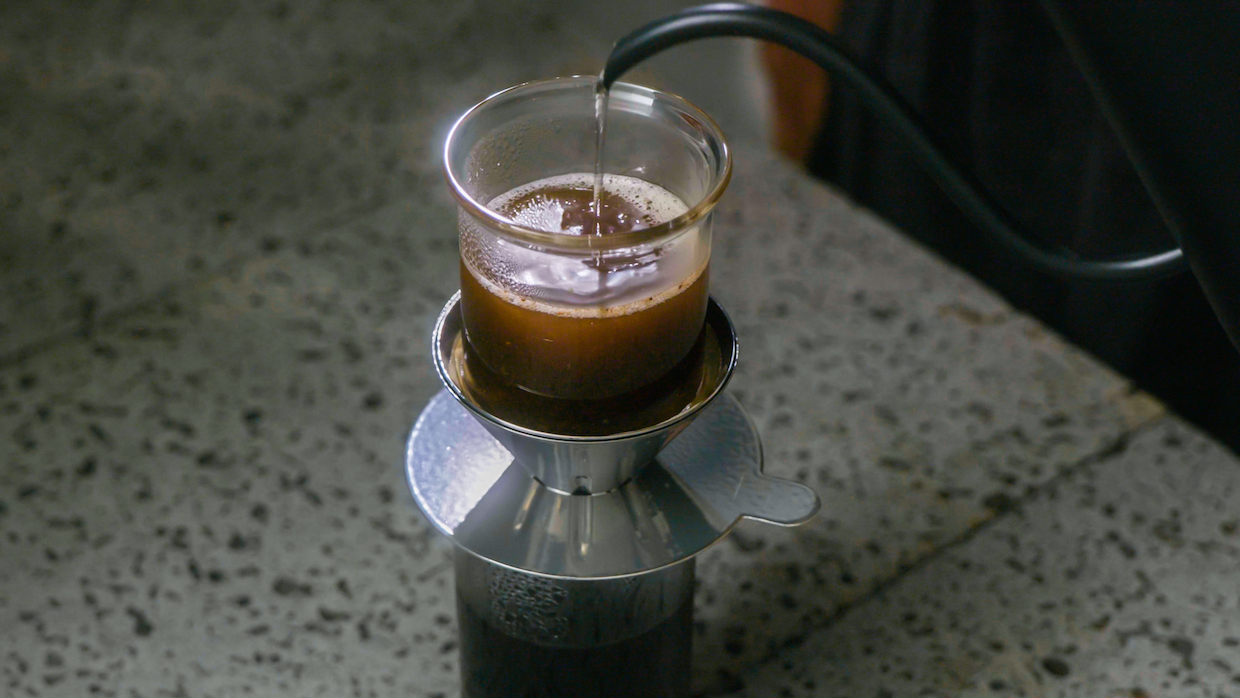
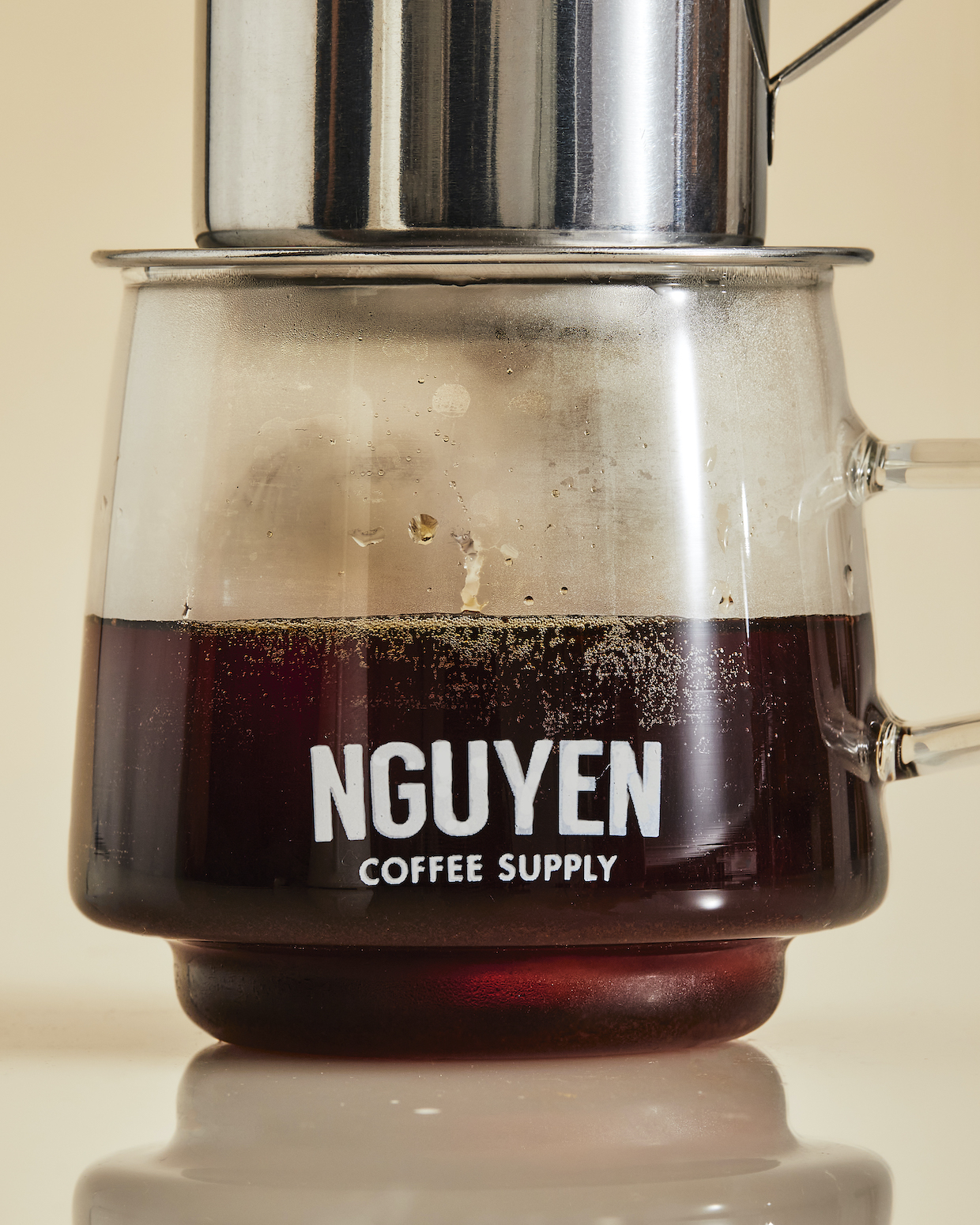
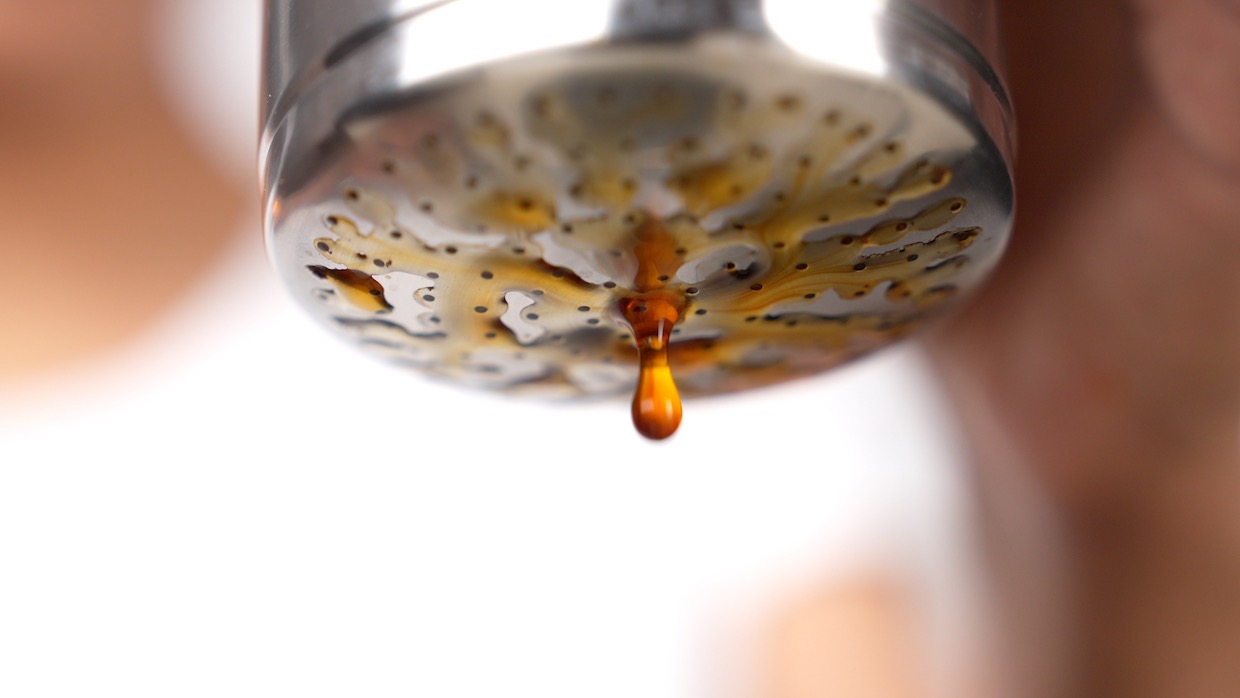
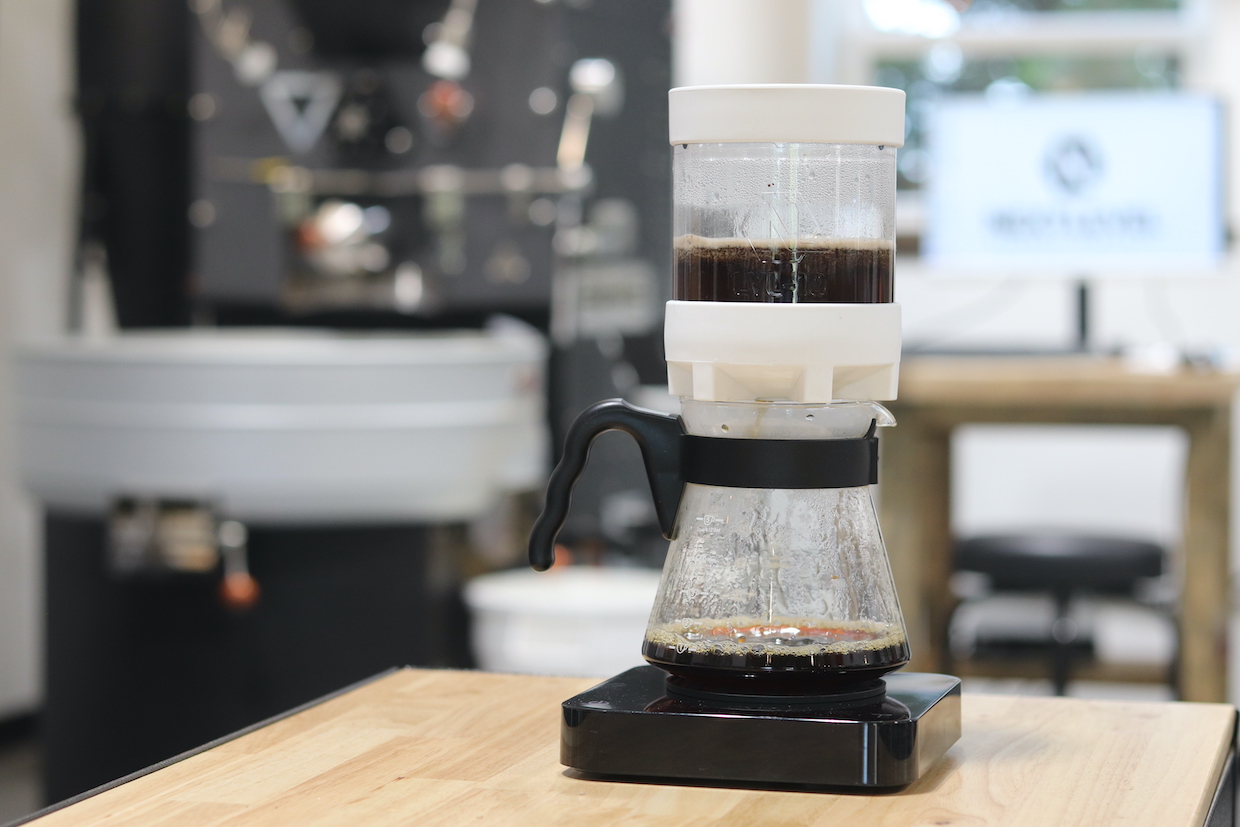





The first coffee I wa ever given that I did not instantly and reflesively spit out because it tasted SO BAD was brewed in a French press. Yes, a tiny Bodum Chambord third litre. While I was ready to spit it out I had also determined to give it a fair chance. I was astounded…. finished that cup and demanded a second, NOW. I learned from my friend who roasted and brewed it how to brew.. sort of. He was a seat of the pants hacker. But I was hooked. I iherited his seat of the pants “just make it” method on both roasting and brewing. Others liked what I did.. I tried to learn more, but information was difficult to come by. Finally one year at EXPO I plonked my hard earned cash down on the table and walked in to the Brewing and Estraction all day marathon event. Oh my….. head spinning, I determoned to put it to work. Sigh…. next year I volunteered to assist for that class again. Different instructor, different approach. Same the third year. I had begun playing with the five variables to try and get better. Now I had a grasp on the concepts and their function.
I established a repeatable brew protocol, then began changing one variable at a time, noting the results. One issue.. the tiny French press I had could not fill “my cup” so I started dosing for the size of the cup, then “diluting” (or to use a current twenty dollar word, “bypassing”) clear hot water into the cup after the strong brew had been poured in. The “brew ratio” remained the same…… I often provide coffee for events (weddings, conferences, celebrations, etc) and when dragging out the big batch brewer is not feasible I will simply bring along my 1.5 litre french presses, figure out how to make lots of water hot quickly, grind it fresh one way or another, and crank out great coffee. Bypass is my good friend. And I did not even know it was “a thing.
Recently I provided coffee for a large event where hot water was simply not availble. And ot enough electric power to do it that way. Two burner camp kitchen gas rings, large stainless stock pots, and the rest is easy. Fourteen pounds of fine coffee was brewed, served, and enjoyed that afternoon. All usng a bypass brew method that was very precuse despite being all done by hand.